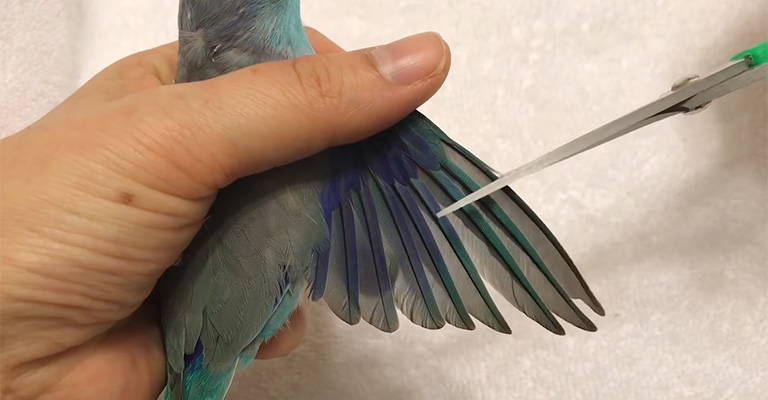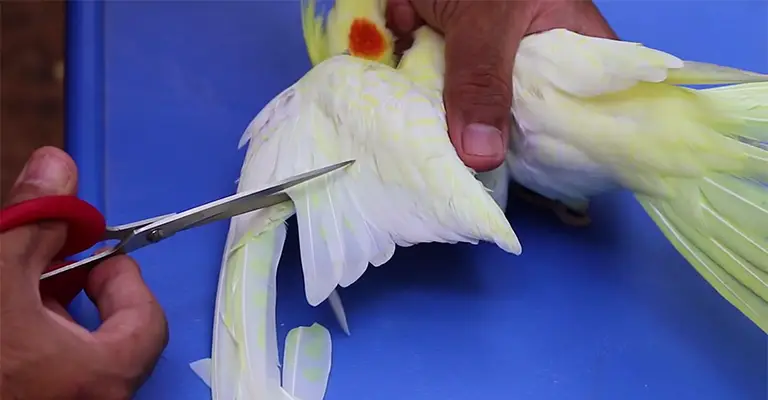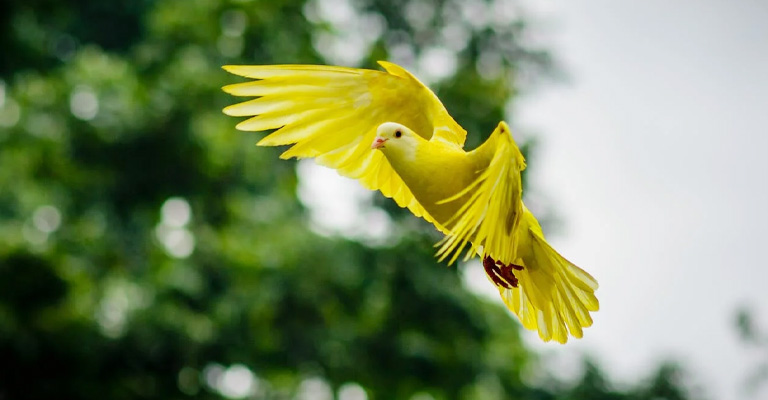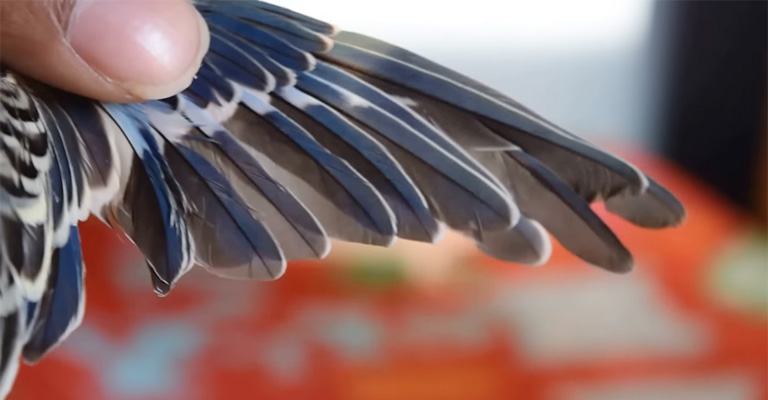Owning a pet bird can be a delightful experience, but it’s important to ensure their safety and well-being. One aspect of bird care that requires attention is wing clipping.
Clipping a bird’s wings can prevent them from flying away and potentially getting injured or lost. However, it’s crucial to approach this procedure with caution and prioritize the bird’s welfare.
In this guide, we will provide you with step-by-step instructions on how to safely clip your bird’s wings. We will also discuss the importance of understanding your bird’s species and individual needs, as well as the potential risks and benefits of wing clipping.
By following these guidelines, you can ensure that your feathered friend remains safe, while still allowing them to enjoy a fulfilling and enriched life. Let’s dive in and learn how to safely clip your bird’s wings!

How to Safely Clip Your Bird’s Wings?
Clipping a bird’s wings is a delicate procedure that should ideally be performed by a professional avian veterinarian or an experienced bird groomer. However, if you feel confident in doing it yourself, here are some general guidelines to follow:
Educate Yourself
Research and understand the anatomy of your bird’s wings. Learn about the proper technique and potential risks involved in wing clipping.
Gather the Necessary Supplies
You will need a pair of sharp, clean bird-specific nail clippers or scissors, styptic powder (to stop bleeding in case of accidental cuts), and a towel or cloth to gently restrain your bird.
Choose the Right Time
Pick a time when your bird is calm and relaxed, preferably after a meal or during a quiet period. Avoid clipping wings during molting or when your bird is ill or stressed.
Prepare a Safe Environment
Find a quiet, well-lit room with no drafts or open windows. Clear the area of any hazards that your bird could potentially fly into.
Secure Your Bird
Gently wrap your bird in a towel or cloth, leaving only the wings exposed. This will help keep your bird calm and prevent any sudden movements.
Identify the Primary Flight Feathers
The primary flight feathers are the longest feathers at the end of the wings. These are the feathers that you will be trimming. Be careful not to cut any blood feathers, as they can cause bleeding and pain.
Trim the Feathers
Hold the wing gently but firmly, and locate the primary flight feathers. Trim only the outermost 2-3 feathers, leaving the remaining feathers intact. Make sure to cut at an angle, avoiding cutting too close to the wing.
Monitor for Bleeding
After each cut, check for any signs of bleeding. If bleeding occurs, apply styptic powder or cornstarch to the cut to stop the bleeding. If bleeding persists, seek immediate veterinary assistance.
Provide Comfort and Reassurance
After the wing clipping, comfort your bird and offer treats or praise to help alleviate any stress or discomfort.
Remember, wing clipping is a controversial topic, and opinions on the matter may vary. It’s important to consider the individual needs and behavior of your bird before deciding to clip its wings.
Consulting with an avian veterinarian or an experienced bird groomer is always recommended to ensure the safety and well-being of your feathered friend.
Is It Safe to Clip Bird’s Wings?

Clipping a bird’s wings can be done safely when performed correctly and with caution. However, it is important to note that wing clipping is a controversial topic among bird owners and avian experts. Here are some points to consider:
Safety
When done properly, wing clipping is generally safe and can prevent birds from flying into dangerous situations or getting lost. It can also help with taming and training birds.
Professional Assistance
It is highly recommended to seek professional help from an avian veterinarian or an experienced bird groomer who can demonstrate the correct technique and provide guidance specific to your bird’s species and needs.
Potential Risks
Improper wing clipping can lead to injuries, stress, and loss of balance for the bird. Cutting too many feathers or cutting them too short can cause pain, and bleeding, and affect the bird’s ability to glide or land safely.
Natural Behavior
Birds are naturally designed to fly, and wing clipping restricts their ability to do so. Some argue that it can negatively impact their physical and mental well-being, as flight is an essential part of their natural behavior.
Alternative Methods
Instead of wing clipping, some bird owners opt for other methods to ensure their bird’s safety, such as providing a safe and enriched environment, training recall commands, or using flight suits or harnesses for outdoor activities.
Ultimately, the decision to clip a bird’s wings should be made after careful consideration of the bird’s species, individual needs, and the potential risks and benefits involved.
Consulting with a professional avian veterinarian or an experienced bird groomer is highly recommended to make an informed decision that prioritizes the well-being of your bird.
Indoor Dangers for Flighted Birds

While flighted birds have the freedom to move around and explore their environment, there are certain indoor dangers that bird owners should be aware of to ensure the safety of their feathered friends. Here are some common indoor hazards for flighted birds:
Windows and Mirrors
Birds may not recognize glass surfaces as barriers and can fly into windows or mirrors, causing injury or even death. To prevent this, use window coverings, decals, or screens to make glass surfaces more visible to the bird.
Ceiling Fans and Open Flames
Birds can be curious and may fly into ceiling fans or open flames, such as candles or stovetops. Always supervise your bird when ceiling fans are in use and keep flames safely contained or extinguished.
Toxic Substances
Many household items can be toxic to birds if ingested, including certain plants, cleaning products, pesticides, and human foods like chocolate or avocado. Keep these substances out of reach and ensure that your bird’s environment is free from potential toxins.
Electrical Cords and Outlets
Birds may chew on electrical cords, leading to electrocution or burns. Keep cords hidden or covered, and use outlet covers to prevent access to electrical outlets.
Small Objects and Choking Hazards
Birds are naturally curious and may investigate small objects that can be choking hazards, such as buttons, jewelry, or small toys. Keep these items out of reach and ensure that your bird’s environment is free from potential choking hazards.
Open Doors and Windows
Birds can quickly escape through open doors or windows if given the opportunity. Always be cautious when opening doors or windows, and consider using screens or keeping your bird in a secure area during these times.
Teflon and Other Non-stick Coatings
The fumes emitted from overheated Teflon or other non-stick cookware can be toxic to birds and can cause respiratory distress or even death. Avoid using these types of cookware or ensure proper ventilation when cooking.
Other Pets
If you have other pets, such as cats or dogs, ensure that they are properly supervised and that interactions with your bird are closely monitored to prevent any potential harm.
By being aware of these indoor dangers and taking necessary precautions, you can create a safe environment for your flighted bird to explore and enjoy while minimizing the risks associated with indoor living.
What Should I Consider Before Clipping My Bird’s Wings?

Before deciding to clip your bird’s wings, it’s important to consider several factors to ensure the well-being and safety of your feathered friend. Here are some key points to consider:
Species and Natural Behavior
Different bird species have varying flight abilities and natural behaviors. Some birds, like finches or canaries, may not require wing clipping as they are not strong fliers.
Research your bird’s species to understand their natural flight patterns and whether wing clipping is necessary or appropriate.
Flight Space and Environment
Assess the living space and environment in which your bird will be housed. If you have a large, bird-safe area for your bird to fly and exercise, wing clipping may not be necessary.
However, if your living space poses potential dangers or hazards, such as open windows or ceiling fans, wing clipping may be considered for safety reasons.
Training and Socialization
Wing clipping can affect a bird’s ability to learn certain flight-related behaviors and can impact their socialization with other birds or humans.
Consider whether your bird will need to learn flight recall or participate in activities that require flight, such as agility training or free-flight exercises.
Health and Mobility
Assess your bird’s overall health and mobility. If your bird has any health conditions or physical limitations that affect their ability to fly safely, wing clipping may be considered to prevent accidents or injuries.
Professional Guidance
It is highly recommended to consult with an avian veterinarian or an experienced bird groomer before deciding to clip your bird’s wings.
They can provide guidance specific to your bird’s species, and individual needs, and help you understand the proper technique to minimize any potential risks.
Personal Preference
Wing clipping is a personal decision that varies among bird owners. Some prefer to allow their birds to have full flight capabilities, while others choose to clip wings for safety or training purposes. Consider your own preferences and beliefs regarding wing clipping.
FAQs
The frequency of wing clipping depends on the growth rate of your bird’s feathers. Generally, wing feathers molt and regrow once or twice a year. It is recommended to clip the wings after a molt, if necessary, or as advised by an avian veterinarian or bird groomer.
While it is possible to clip your bird’s wings yourself, it is highly recommended to seek professional assistance from an avian veterinarian or an experienced bird groomer.
They have the knowledge and expertise to perform the procedure safely and minimize any potential risks or injuries.
When done correctly, wing clipping should not cause pain to your bird. The procedure involves trimming the outermost flight feathers, which do not have a blood supply and are not sensitive.
Wing clipping can affect a bird’s behavior to some extent. Clipped birds may have reduced flight capabilities, which can impact their ability to explore and exercise. However, it can also make them more dependent on their human caregivers and may aid in taming and training efforts.
Wing clipping is a temporary measure, as the clipped feathers will eventually molt and regrow. Once the feathers have regrown, your bird will regain its ability to fly. However, it’s important to note that repeated wing clipping over time can affect the quality and strength of the feathers.
Wrapping Up!
Clipping your bird’s wings can be a responsible decision to ensure their safety, but it should always be approached with care and consideration for their well-being.
Remember, wing clipping is not a permanent solution and should only be done when necessary, such as during the initial training period or in certain situations where flight poses a significant risk.
Always consult with an avian veterinarian or an experienced bird professional before attempting to clip your bird’s wings.
They can provide valuable guidance tailored to your bird’s species and individual needs. Provide your bird with a stimulating and enriching environment, even if their flight is limited.
By prioritizing your bird’s safety and taking the necessary precautions, you can create a loving and secure environment.
A clipped bird can still lead a happy and fulfilling life, filled with love, care, and plenty of opportunities for exercise and mental stimulation.